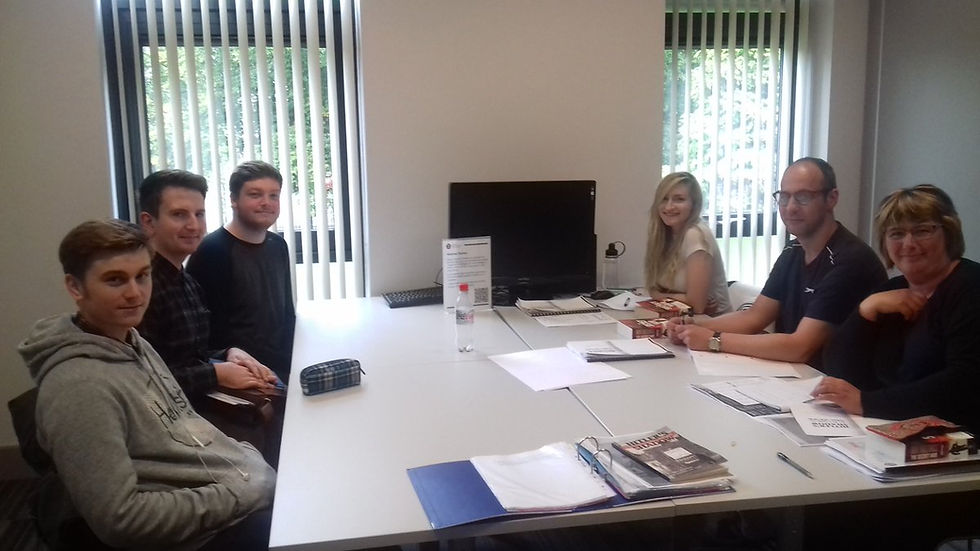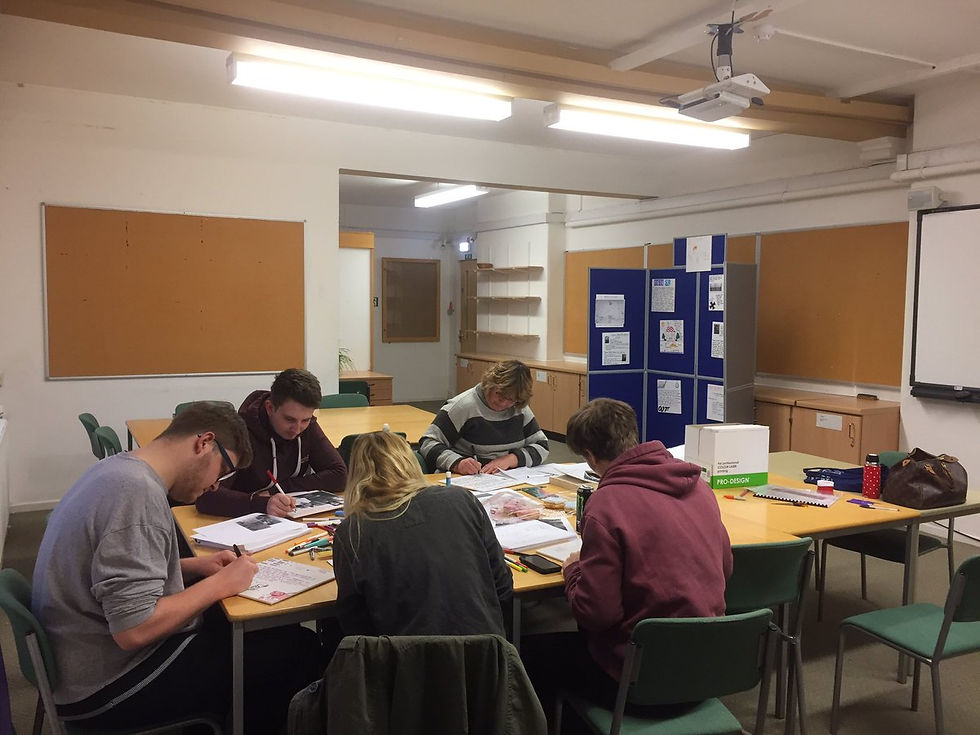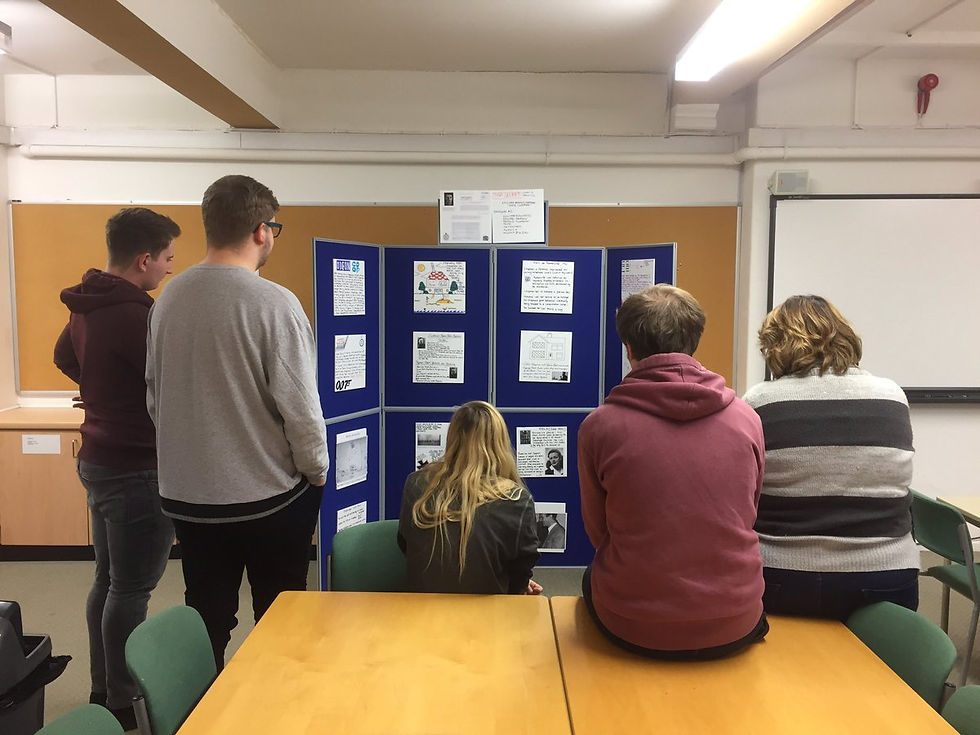Storyboarding Spy History
- Claire Hubbard-Hall
- Jul 15, 2018
- 6 min read
For those scholars working on the history of intelligence and covert operations, the clandestine nature of the secret state poses many research-related challenges. However, a different challenge is faced in the classroom, whether that is in a secondary school or university session; as tutors attempt to construct a session that conveys key messages and learning outcomes in relation to say the Iranian regime change ‘Operation Boot’ in 1953[1]or the U-2 incident in 1960.[2]Storyboarding offers a valuable learning experience; ensuring students identify and understand the complexity of covert action and intelligence operations. Tutors are able to use storyboarding to encourage students to consider the multifaceted nature of such historical events in a relatively quick and accessible way. As an inclusive teaching exercise, storyboarding motivates students who enjoy history, who might perhaps feel daunted by the literacy demands that the subject of history often makes.[3]
Storyboarding can be defined as picture writing or visual storytelling, but it is nothing new. From 32,000-year-oldChauvet cave wall drawingsto storyboardsused by animators such as Walt Disney and filmmakers, stories are certainly powerful memory stimuli. Research suggests that the human brain processes stories more fully than other stimuliand that the process of storyboarding can help students develop critical thinking through questioning and sequential thinking, thus providing contextual learning.[4]
As an approach, storyboarding takes narrative storytellinga step further. By committing the story of a particular historical event through the written word and pictures onto paper or digitally[5], storyboarding fosters creative and cooperative learning which encourages full student engagement in the story being told, with students becoming practically involved, stimulating student energy levels. Some scholars have argued that storyboarding serves as a useful form of ‘edutainment’.[6]
A good example of this can be found in a 2010 article in the Historical Association Teaching History magazine. A retired Head of Humanities reflected on his use of a simple but effective creative visual teaching strategy which unlocked high-level conceptual understanding amongst his students. He challenged GCSE students to select and justify their choice of key historical events and to recreate those using only construction toys or modelingclay and a camera. Images were then transferred to a computer, where students added captions and printed them off. Similar to the use of storyboarding, he found that such a strategy served as an effective form of education and entertainment.[7]
Despite such advantages, there are a number of pitfalls to the storyboarding process: it is time intensive, which can be hindered further by unknown or undisclosed student group dynamics. Students may also be hesitant or uncomfortable about working in a group, and they may not have confidence in their tutor. Lastly, there may be insufficient time or timetabling constraints that limit the possibilities of using storyboarding within a course. However, given enough preparation, such limiting factors can easily be overcome.

Students undertaking the final year history undergraduate special subject ‘The Secret War: Intelligence during the Second World War’ at Bishop Grosseteste University in Lincoln (October, 2016).
Two years ago, in 2016, I had the chance of designing and delivering a third-yearhistory undergraduate special subject – ‘The Secret War: Intelligence during the Second World War’. With groups of no more than six students, I decided to move away from the weekly two-hour seminars of standard reading and discussion format to explore different pedagogies such as flipped pedagogy through the tool of visual storyboarding. This was adopted for one session which took place mid-way through the module. The decision to adopt storyboarding rested upon my aim to facilitate greater student understanding of intelligence operations. The session focused on the‘double-cross’ (XX) system with the case study of double-agent ‘Garbo’ and the key role he played in the lead-up to D-Day in June 1944.
What now follows are my reflective thoughts on the practice of storyboarding in the classroom, which I hope will be of interest and use to secondary teachers (and university lecturers) delivering history modules which contain elements of covert action and intelligence. Intelligence operations have multiple layers of narrative and multiple actors situated within an ever-changinggeopoliticallandscape. Storyboarding allows students to understand and appreciate the diverse range of individual experiences, alongside much bigger processes and patterns of change.
Students were asked at the end of the previous session to read three selected readings in preparation for the storyboarding session. This provided them with basic knowledge which they would be asked to call upon throughout the actual storyboarding session. I stressed the importance of the need to complete the work; pointing out that the session would be useless if they did not complete the preparatory work, which would result in poorly constructed storyboards. As a form of blended learning with flipped pedagogy, students were also tasked with synthesizing readings with other course materials such as video clips. The ‘flipped’ teaching strategy allows tutors to better organisecourse content, focusing on specific learning outcomes. Engaged students are empowered before even entering the classroom, which is then strengthened in the session.

Final year BGU history undergraduates engaging in a storyboarding session (November, 2016).
At the start of the session, I pointed out that there was no one correct way, highlighting the complexities of covert and intelligence operational narrative(s). Students then negotiated on what narrative(s) would be conveyed, before embarking on compiling their selected narrative(s). During this time, I was able to evaluate student comprehension before they attempted the next step. Interestingly, several stages were encouraged, but not all were executed, with students adapting some to meet specific needs. An ideas sheet, a planning sheet, a communication sheet and an organisationsheet were provided to facilitate creative and critical thinking, but not all were taken up.
Storyboard squares were provided, along with a range of contemporary materials conveying snippets of useful information such as newspaper cuttings, photographs, letters, diaries, official reports, witness statements, court proceedings, maps, and historian quotes from relevant key works. Each group assigned individuals specific roles such as a ‘leader’ who after consultation with the group made the final decisions; ‘researchers’ who facilitated and compiled materials to populate each storyboard; ‘writers’ who were responsible for visual narratives and any text added to boards; and then ‘pinners’ who were responsible for ensuringmaterials were attached or stuck onto boards using an appropriate method.
During the construction of the boards, students engaged in an iterative process, continuously revising the content of squares on draft paper before transferring final compositions to a storyboardsquare. Discussion amongst themselves highlighted different perspectives and ways of working amongst peers. It is essential that tutors facilitate this stage, especially when students review the evidence, as this helps students to engage in a critical discussion of contemporarymaterials. Tutors should also be alert to any signs of possible distress.

Final year BGU history undergraduates reflecting on their completed spy history storyboards (November, 2016).
After the two-hour exercise had been completed, students engaged in peer-led discussion, which helped them to work out basic to more advanced ideas, as well as identifying and analysingwhich encounters, actions, places, people were key to the narrative. Storyboarding brought home a sense of time, such as how urgent a situation was which was perhaps not fully conveyed in the readings. Students reflected on how they had constructed their narratives, identifying and discussing the ways in which easily verifiable history can be distorted, before going on to identify inconsistencies, inaccuracies, andcontradictions in ‘their’ version of narrative(s), as well as key questions concerning how narratives can be made attractive by politicians.
At the end of the session, it was evident that students possessed a greater understanding of the inner mechanics of the covert world, and the journey of information and its tangible impact upon informing policy. This was complementedby a greater understanding of the reporting process, with students asking questions such as by whom, to whom, as well as their observations on the nature of intelligence reporting over a period of time and intelligence ‘sources’. With many tangible benefits, the storyboarding session promoted a greater sense of student wellbeing, as feelings of stress and isolation were addressed by the tutor who served as an effective advisor, moderator, andreviewer. Overall, the ability of students to storyboard spy history presents many pedagogical benefits, but, ultimately, it generates greater student insight and understanding of some of the murkiest parts of history.
If you would like to share your thoughts, comments or observations on storyboarding spy history please contact Dr. Claire Hubbard-Hall via email: claire.hubbard-hall@bishopg.ac.uk or via Twitter: @SpyHistory
[1]See Rory Cormac’s recent work Disrupt and Deny: Spies, Special Forces, and the Secret Pursuit of British Foreign Policy (Oxford: Oxford University Press, 2018), 99-108.
[2]Monte Reel, A Brotherhood of Spies: The U-2 and the CIA’s Secret War (New York: Doubleday, 2018).
[3]Peter Clements, “Picture This: A simple technique through which to teach relatively complex historical concepts,” Teaching History, 140 (2010): 30.
[4]Thomas B.Newman, “The Power of stories over statistics,” British Medical Journal, 327 (2003): 1424-1427.
[5]Najat Smeda, Eva Dakich, and Nalin Sharda, “The effectiveness of digital storytelling in the classrooms: a comprehensive study,” Smart Learning Environments, 1:1 (2014): 6.
[6]The term ‘edutainment’ can be attributed to: KowitRapeepisarn, Kok Wai Wong, Chun Che Fung, and Arnold Depickere, “Similarities and differences between learn through play and edutainment.” In Proceedings of the 3rd Australasian conference on Interactive entertainment, Murdoch University (2006): 28-32.
[7]Clements, 30-36.




Comments